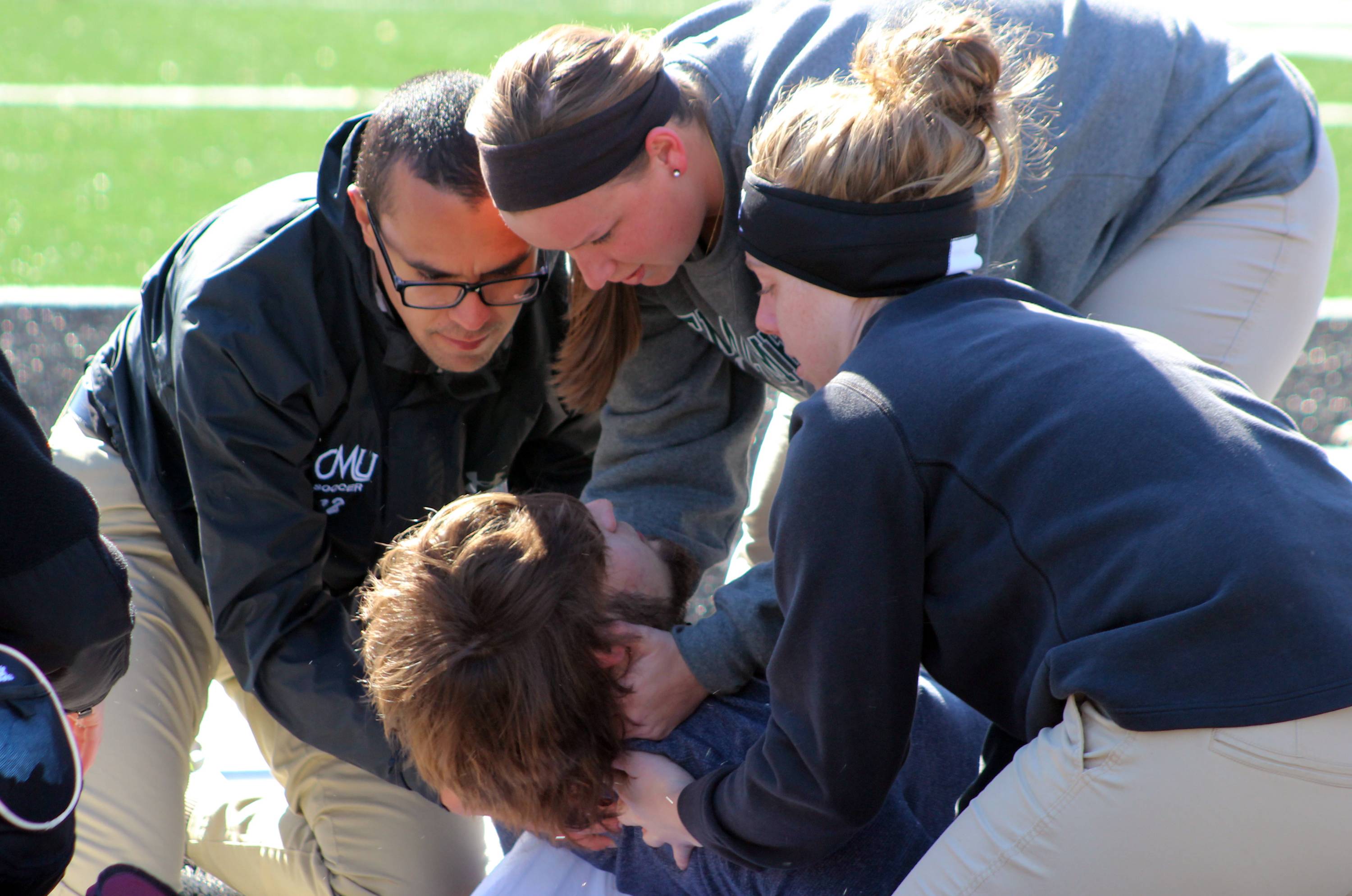
At least that was the delicate situation for several groups of CMU health professions students on Friday, March 10, as they played their part in an all-day interdisciplinary simulation. The experience was designed to put students’ education and training into action – providing a glimpse into real-life, critical circumstances they’ll soon likely encounter as professional health care providers.
Students from CMU’s four health care areas – athletic training, nursing, physical therapy, and occupational therapy – participated. They were completely on their own – providing treatment and doing their part in the process, as faculty carefully observed and critiqued their actions.
Each hour of the day focused around 15 students from the four areas undergoing a mock crisis situation. When they weren’t performing, they observed other groups – absorbing the full circle in a way they had never before experienced.
“Anytime someone is the recipient of health care, they are being treated by more than one discipline,” said Megan Hess, CMU associate professor of nursing and chair of its Health Professions division. “Disciplines are taught from different perspectives, so the more familiar they are with each other, the more coordinated, seamless, better care they can give.”
Each scene kicked off with athletic training majors responding to the report of an injury victim – played by a fellow CMU student. Utilizing their education and training, they swiftly moved in to analyze the situation and provide the first level of care.
“This is more realistic than some of our other scenarios because this is all us,” said CMU junior Madison Clark, an athletic training major from Independence. “We’re eventually going to be the ones who have to make these decisions, so I like that CMU puts us in these situations.”
As part of the procedure, the athletic training students even called 9-1-1. Fortunately, Fayette’s Emergency Medical Services were in on the performance – but took it seriously for the benefit of the students’ educational experience.
Blaring sirens and all, EMS arrived at the scene of the simulated injury, and later transported the victim by ambulance to CMU’s Thogmorton Center for Allied Health, where nursing students were prepared to step in and take over.
“We’re pretty lucky with our resources here,” said CMU junior Danielle Grucky, a nursing student from Phoenix, Ariz. “A real-life situation like this is so beneficial and it makes it easier for us when we’re in clinicals.”
After athletic training and nursing care had been provided for the victim, the scene jumped to two days after the initial injury. This is when the patient underwent either physical therapy or occupational therapy – often final steps in the treatment process.
Austin Horn, a sophomore Occupational Therapy Assistant major from Harrisburg, said he had a step-by-step procedure ready, but when it actually came time to act, nothing went according to plan – much like what could occur in real life. “We had to adjust,” he said. “We came in and the patient was on the floor, so we had to work together to figure out how to get him in bed.”
Having already obtained his bachelor’s degree in Business, Tanner Fuemmeler, a junior from Slater, is currently pursuing an additional Physical Therapist Assistant degree. He spoke about the benefits of observing the other health care areas in action.
Up until this point, we’ve mainly been working just with ourselves and never really had interaction with nurses or anything like that,” Fuemmeler said. “It’s good to see those sides; it really gives you some insight.”
The interdisciplinary simulation was a first for CMU, and it proved not only successful, but extremely beneficial. As a college student, it’s easy to become consumed in one’s own area of study – sometimes forgetting other important pieces that may come into play when out in the real world. This event granted an overall understanding of how health care focuses are undoubtedly linked – and why that link is so very crucial.
“This is the first time CMU has done an allied health interdisciplinary simulation, but we hope to see many more events like this,” said Hope Taylor, CMU nursing skills lab coordinator. “There has already been talk of one that will encompass six to eight CMU majors, and we’re very excited about that.”